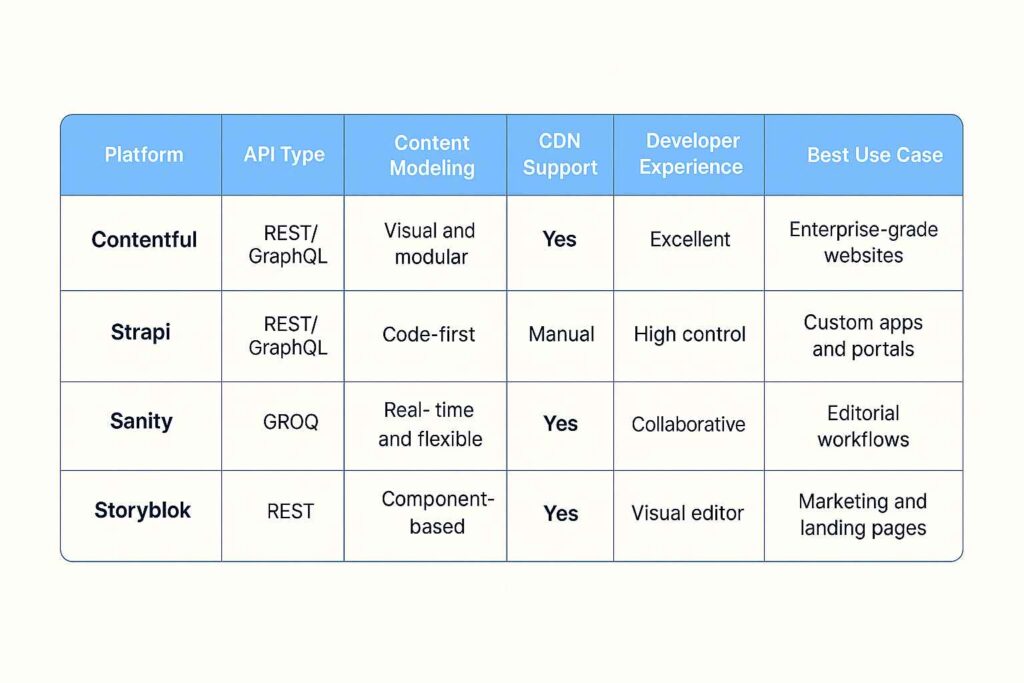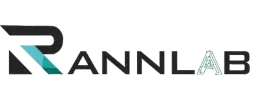Introduction
In today’s digital-first landscape, organizations are expected to deliver seamless content experiences across websites, mobile apps, smart devices, and emerging platforms. Traditional monolithic CMS platforms—where the backend and frontend are tightly coupled—struggle to meet these demands. This is where Headless CMS architecture steps in, offering a modern, decoupled solution that empowers teams to manage content centrally and deliver it anywhere via APIs.
This guide provides a detailed overview of Headless CMS architecture, its core components, implementation strategies, and performance considerations, tailored for technical professionals seeking scalable and future-proof content infrastructure.
What Is a Headless CMS?
A Headless CMS is a content management system that focuses solely on the backend—content creation, storage, and management—while exposing that content through APIs for consumption by any frontend technology. Unlike traditional CMS platforms like WordPress or Joomla, which include built-in templating engines, a headless CMS does not dictate how content is presented. This separation of concerns allows developers to build custom user interfaces using frameworks such as React, Vue.js, Angular, or Svelte, while content editors work independently in a structured backend.
Core Components of Headless CMS Architecture
1. Content Repository
The content repository is the foundation of a headless CMS. It stores structured content in formats like JSON or Markdown, along with media assets such as images, videos, and documents. Advanced repositories support:
- Content versioning and rollback
- Localization and multi-language support
- Taxonomy and tagging systems
- Modular content types for reusability
2. API Gateway
The API layer enables content delivery to any frontend or device. Most headless CMS platforms offer RESTful and GraphQL APIs, allowing developers to query, filter, and retrieve content efficiently. GraphQL is particularly useful for complex queries and minimizing over-fetching.
3. Authentication and Access Control
Security is enforced through token-based authentication protocols such as OAuth 2.0 or JWT. Role-based access control ensures that only authorized users can view, edit, or publish content. Enterprise-grade platforms also support SSO integration and granular permission settings.
4. Event System and Webhooks
Webhooks allow the CMS to communicate with external systems when content changes occur. For example, publishing a new article can trigger a static site rebuild, update a search index, or notify a marketing automation tool. This event-driven architecture supports real-time workflows and automation.
5. Media Management and CDN Integration
Headless CMS platforms typically include asset libraries for managing media files. These assets are served via Content Delivery Networks (CDNs) to ensure fast, global access. Features often include:
- On-the-fly image transformations
- Lazy loading and responsive formats
- Asset versioning and metadata tagging
Content Modeling and Schema Design
Effective content modeling is essential for scalability and maintainability. It involves defining content types (e.g., blog posts, products, testimonials) and their associated fields (e.g., title, body, image, author). Best practices include:
- Using atomic design principles to create reusable components
- Establishing relationships between content types (e.g., authors linked to articles)
- Supporting localization with language variants and fallback strategies
- Implementing validation rules and conditional logic for editorial consistency
Rendering Strategies for Headless CMS
The decoupled nature of headless CMS allows developers to choose the most appropriate rendering strategy based on performance, SEO, and user experience requirements.
Static Site Generation (SSG)
SSG pre-renders pages at build time, resulting in fast load times and minimal server overhead. Ideal for blogs, documentation sites, and marketing pages.
Server-Side Rendering (SSR)
SSR renders pages on the server per request, ensuring fresh content and SEO-friendly HTML. Suitable for dynamic content and e-commerce platforms.
Client-Side Rendering (CSR)
CSR loads content asynchronously in the browser, offering rich interactivity. Best for dashboards, single-page applications, and real-time interfaces.
DevOps and Deployment Considerations
Integrating a headless CMS into a modern DevOps pipeline enhances agility and reliability.
- Environment Management: Separate staging, production, and preview environments to support safe content workflows.
- CI/CD Automation: Use tools like GitHub Actions, GitLab CI, or Jenkins to automate builds and deployments.
- Monitoring and Observability: Track performance, errors, and user behavior using platforms like Datadog, Sentry, or New Relic.
- Content Previews: Enable real-time previews for editors to validate content before publishing.
Security and Compliance
Security is a critical aspect of headless CMS architecture, especially for enterprise deployments.
- Token-Based Access: Secure APIs with scoped tokens and expiration policies.
- Rate Limiting and Throttling: Prevent abuse and ensure fair usage.
- Data Encryption: Encrypt sensitive data at rest and in transit using industry-standard protocols.
- Compliance Frameworks: Ensure GDPR, HIPAA, and SOC 2 compliance through audit logs, consent management, and data residency controls.
Performance Optimization Techniques
Headless CMS platforms are engineered for speed and scalability. Key optimization strategies include:
- CDN Integration: Serve content and media via global edge networks.
- Conditional Asset Loading: Load only necessary scripts and styles per page.
- Lazy Loading and Preloading: Improve time-to-interactive and reduce initial payload.
- Caching Strategies: Use API caching, edge caching, and client-side caching to minimize latency.
Integration Ecosystem
Headless CMS platforms are designed to integrate seamlessly with modern digital tools:
- E-commerce: Shopify, BigCommerce, Magento
- Search and Discovery: Algolia, Elasticsearch
- Analytics and Tag Management: Google Analytics, Segment, Mixpanel
- Marketing Automation: HubSpot, Mailchimp
- Translation Services: Transifex, Lokalise
- Authentication and Identity: Auth0, Firebase Auth
Testing and Quality Assurance
Robust testing ensures reliability and performance across platforms:
- Unit Testing: Validate content models and API responses.
- End-to-End Testing: Simulate user journeys across devices.
- Accessibility Audits: Ensure WCAG compliance for inclusive design.
- Performance Benchmarks: Use Lighthouse and WebPageTest to measure speed, usability, and SEO.
Migration Strategy from Traditional CMS
Migrating to a headless CMS requires careful planning and execution:
- Content Audit: Identify reusable assets and dependencies.
- Schema Design: Model content types and relationships in the new CMS.
- Frontend Development: Build interfaces using modern frameworks.
- API Integration: Connect frontend to backend via REST or GraphQL.
- Testing and Optimization: Validate performance, SEO, and accessibility.
- Deployment and Monitoring: Launch with zero downtime and continuous observability.
Platform Comparison Overview

Conclusion
Headless CMS architecture represents a strategic shift in how content is managed and delivered. By decoupling the backend from the frontend, organizations gain the flexibility to innovate across platforms, scale efficiently, and meet the demands of modern digital users. Whether you’re building a global e-commerce platform, a high-performance marketing site, or a multi-channel content hub, headless CMS provides the infrastructure to succeed.
For teams seeking agility, performance, and future-proof architecture, adopting a headless CMS is not just a technical upgrade—it’s a business imperative.
Ready to Modernize Your Content Infrastructure?
If you’re considering a transition to headless architecture or want expert guidance on selecting the right CMS platform, we’re here to help. Our team specializes in scalable, API-first solutions tailored to your business goals.
Contact us today to schedule a consultation and start building your next-generation content experience.

